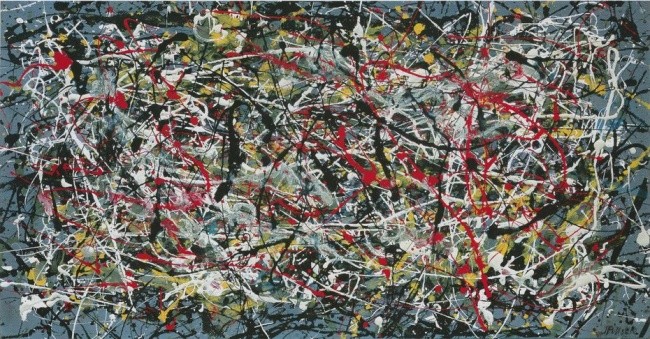The most daring fakes of paintings and sculptures.
Auction houses do not always carry out a thorough examination of canvas or paints, dealers, if desired, forge certificates of authenticity and come up with convincing provenance – a family tree – pictures. As a result, not only novice buyers are deceived, but also experts, art historians and even relatives of artists. As a rule, the falsifiers themselves are talented artists whose paintings have not caused any excitement either at the auctions, in the galleries, or even on the opening days.
UsaARTnewS offers you to look at the most daring fakes in the world of art, which left art historians out of work.
Fakes of sculptures by Giacometti
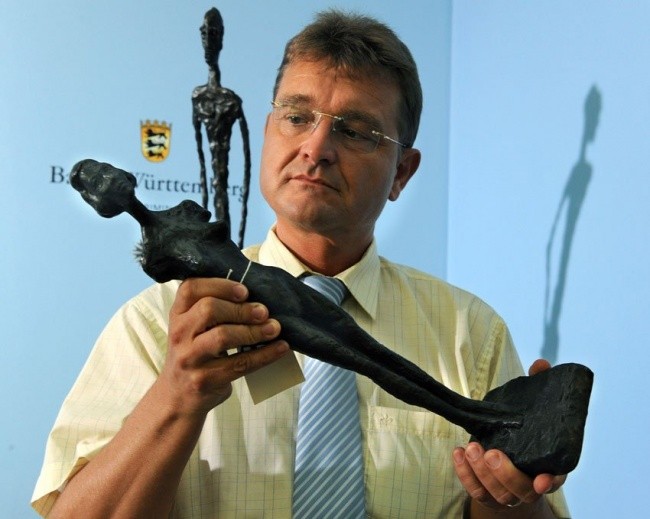
Alberto Giacometti is a famous sculptor, painter and graphic artist, one of the greatest masters of the 20th century. And forged his work Dutch artist Robert Dreissen, one of the most famous forgers. Like most of his “colleagues”, Dreissena’s creative destiny turned out badly – he simply was not needed by anyone!
His first fakes he did in the 80’s. Then Dreissen got acquainted with the great authorities of the black art market. Among his first customers, for example, was Michael Van Rijn, one of the most successful dealers in the illegal art market.
In the late 90’s, Dreissen began to copy the style of Giacometti. The sculptor for his life created few works, traces of some lost. Therefore, a story was invented that Brother Giacometti, Diego, at night made copies of sculptures and hid them in a pantry. Copies dispersed throughout the world for millions of euros until the intermediary of Dreissena was arrested, and the falsifier himself did not flee to Thailand. Has had time after all! Not everyone is so lucky!
But Dreissen, in an interview with the German magazine Der Spiegel, said that he does not regret anything, and that people who are willing to pay tens of thousands of euros for the present Giacometti deserve to be deceived. The most expensive work of Alberto Giacometti, by the way, was sold at Sotheby’s auction in 2010 for $ 104 million.
“Christ in Emmaus”, Jan Vermeer
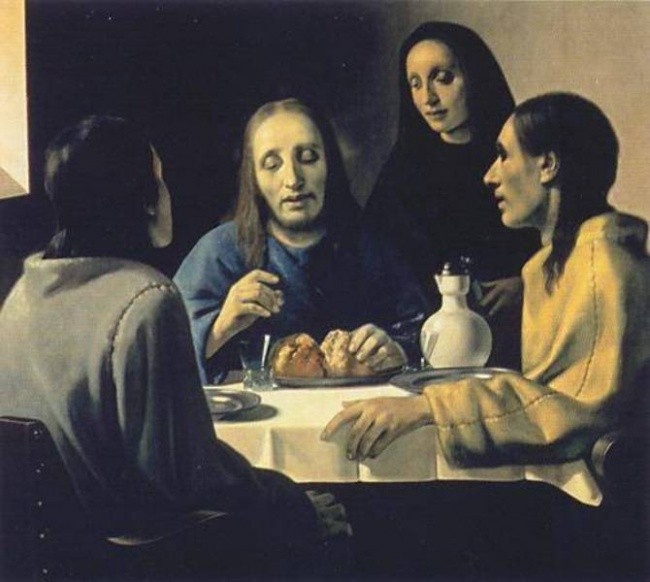
Purchase price: $ 6 million
Dutch artist Han van Meegeren, born in the late 19th century, became famous for working on fakes in the style of Jan Vermeer. Richness brought him the picture “Christ in Emmaus.” His work Meegeren, who worked as an art dealer, in 1937 sold under the guise of the canvas Vermeer.
After this transaction, the artist bought a house in Nice, where he painted a few more paintings in the style of Vermeer, one of which – “Christ and the Sinner” – then sold Hitler’s ally Hermann Goering. After the end of World War II, police brought the painting home to Meegeren so that the art dealer helped to return the work. Meegeren refused to say who he “bought” Vermeer, for which he was accused of treason. The artist was threatened with a life sentence. In court, Meegeren admitted that he was making fakes, but he was not believed, even when he was indignant: “How could you suppose that I sold Goering to this Vermeer! I sold him a fake! “, Because at one time the critics unanimously recognized the authorship of Vermeer. To prove his skills Meegeren painted another “Vermeer” and was sentenced to one year in prison.
“Odalisque”, Boris Kustodiev
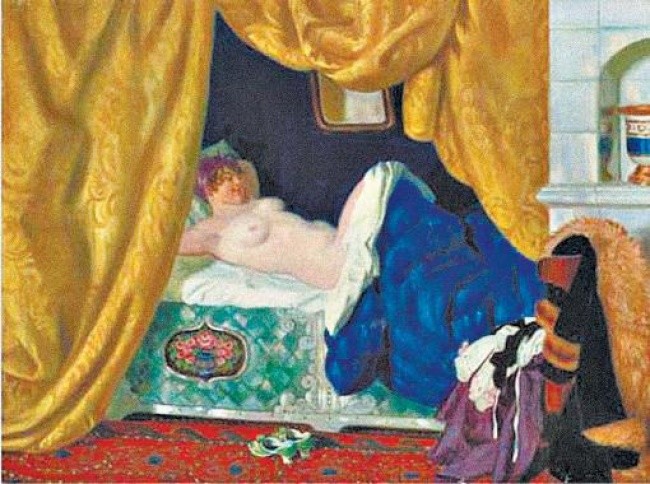
Purchase price: $ 6 million
Sale of the painting “Odalisque”, exhibited at the Christie’s auction in 2005 as the work of Boris Kustodiev, cast doubt on the reputation of this auction house (together with Sotheby’s it accounts for most of all auction auctions of the world market).
A picture for $ 2.9 million (a record price for Kustodiyev) was bought by Viktor Vekselberg. The auction house, by all rules, issued a guarantee to the buyer for 5 years. However, some time after the purchase, the specialists of the fund Aurora Fine Art (whose main owner is Vekselberg) said that they doubt the authenticity of the picture. Leading Russian experts said that the author of the picture was not Kustodiev, but another artist who painted in the style of a Russian artist, while copying elements of his other paintings.
Typically, auction houses try to solve such situations quickly and without publicity, but this dispute was decided in the Supreme Court of London. After two years of hearings, the court allowed Vekselberg to terminate the deal and return the money.
“Landscape with a stream”, Ivan Shishkin
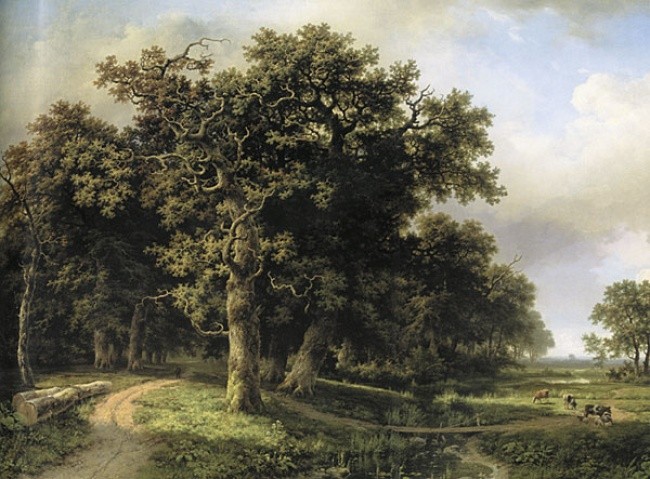
Purchase price: $ 1.1 million
In 2004, the auction house Sotheby’s put up for auction, held in the “Russian Week”, a picture of Shishkin “Landscape with a stream” with an estimate of 700 thousand pounds sterling ($ 1.1 million). However, shortly before the auction, the British newspaper Guardian published an article in which it showed that the landscape is very similar to that of the little-known Dutch artist Marius Kukkuk. The pictures differed only in that there are people in the picture of the Dutchman, and there is no them on the landscape of “Shishkina”, although the artist’s signature was in the corner of the picture.
In Sotheby’s assured that the signature of Shishkin was checked for authenticity, and the similarity of paintings can be explained by the fact that it was written at a time when the Russian artist was influenced by the Düsseldorf school of painting.
Estimate Sotheby’s was 140 times higher than that on which exhibited a picture of the Kukkuk auction house Bukowskis in Stockholm a year earlier. In an article by Guardian, one of the employees at the house told that the painting was sold for $ 64,000, which surprised her and her colleagues.
“Forest”, Max Ernst
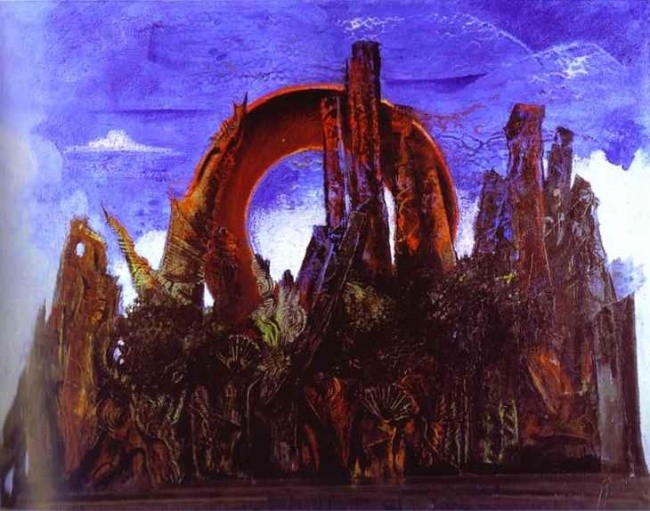
Cost of purchase: $ 7 million
German Wolfgang Beltratchi painted the first forgery in 1965, when he was 14 years old. It was Picasso’s “blue period”. However, his main “specialization” became German artists, among whom the works made under the expressionist Heinrich Campendonck were most often met. On them, Beltratchi and his wife Helen earned the first capital, and then switched to more “expensive” names – Fernand Leger, Georges Braque and Max Ernst. The couple came up with the story that Helen Beltracci inherited a collection of paintings by these artists from her grandfather, who in turn was sold by the gift of a well-known Jewish collector Alfred Flechtheim (soon after the Germans came to power in Germany and Flechtime fled to France) .
In the early 2000s, Beltratchi drew Ernst, whose authenticity was not doubted even by Vernes Spies, the former director of the Pompidou Center in Paris, considered one of the top experts on Max Ernst. And the widow of the artist, seeing the work “Forest”, said that this is the best that Ernst ever created. As a result, “Les” was sold to a Swiss firm for $ 2.3 million, and after a while the picture was found in the famous collector of surrealists – the French publisher Daniel Filipacci, who paid $ 7 million for it.
After that, luck began to change Beltratchi. One of the oldest auction houses – the German Lempertz – sold the picture of Campedonka to the Maltese fund, which doubted the authenticity of the work and began to conduct an examination. As a result, the deception surfaced. The court sentenced Wolfgang Beltracci to 6 years in prison, and his wife – to 4.
“Lilac tablecloth”, Marc Chagall

Purchase price: $ 500,000
One of the most daring schemes for selling counterfeits belongs to the American art dealer of Iranian origin Eli Sakhaya. He sold both the original and the forgery, written from the original. In this case, the fake, as a rule, was accompanied by a certificate, which the art dealer received when buying the original.
For example, a picture of Marc Chagall “Lilac tablecloth”, Sahay bought in 1990 at Christie’s auction for $ 312,000. A copy of this work, he then sold to a Japanese collector for more than $ 500,000, and the original resold at the same Christie’s in eight years for $ 626,000.
The FBI paid attention to Sakha’s activities after two main auction houses Christie’s and Sotheby’s simultaneously put up for auction two identical paintings – “Vase with Lilies” by Paul Gauguin. The counterfeit was intended to sell to an unsuspecting Japanese collector, who recently acquired a painting from Sakha. And he decided to sell the real Gauguin through a rival organization.
Most fakes Eli Sahay sold in Asia, and the originals left with auctioneers’ hammers in London or New York. Japanese collectors could not always distinguish the true Chagall from forgery, and inviting an expert from Europe made sense when the picture was at stake with a price tag of a million dollars, and Sahai did not sell such expensive paintings.
“Tug and barge in Samoa”, Paul Signac

After the detection of counterfeit pictures are not always destroyed. In the west, there is a practice of transferring such paintings to art or historical universities, in order to teach students how to successfully or unsuccessfully fake them. Recently, more and more popular are fake exhibitions, which organize similar universities. One of the most popular was held in the state of Ohio in 2012. It showed “Picasso”, “Signac”, “Carrena” brush Mark Landi, who painted in his life at least 60 fakes.
Despite the fact that the FBI’s Landi activities were discovered back in 2008, there were no charges brought against him, as he did not sell his paintings, but gave them to museums. But strictly speaking, the financial damage to the museums (and there were not less than 30 of them) still suffered – first of all, now spending money to check the works that Landi brought to them as a gift.
Often pretending to be a fictitious name and acting on behalf of a religious community, Landi gave a fake picture, supposedly in memory of a relative who was related to the museum or its directorate. One day he visited the director of the Hilliard University Museum in Lafayette, Louisiana, and presented him a painting by American artist Charles Carren. Expert, checking the picture, found that oil was drawn not on the canvas, but on a printed reproduction of the picture. In view of the fact that the expert community is a close circle of people who know each other well, it soon became clear that shortly before the puncture with Karren, Mark Landi donated to the Oklahoma Museum “Fields of Signac” (the original work hangs in the Hermitage in St. Petersburg). At what same “Signac” at the same time he gave and the museum in Georgia. Everywhere under the oil there were pixels of a printed reproduction.
Modigliani from Elmira de Hori

About Elmir de Hori write books and make films. During his life he created thousands of fakes of the most famous and expensive artists – from impressionists to modernists. To convince the true origin of the paintings, De Hori bought old catalogs with the picture of the artist, then carefully cut it out from there, drew his “Matisse” or “Picasso”, took a picture and inserted the illustration back into the catalog. The buyer then had no doubt that the original was in front of him.
The deception was revealed after in the 1960s the Texas oil magnate Algur Medauz bought a large collection of paintings – Modigliani, Picasso, Matisse and others – from the art dealer Fernand Legros, who collaborated with de Hori. After Medauz sued, de Hori preferred to stay in Spain. There he continued to paint, but already signed his name. In the 1980s, after the death of the artist, major auction houses – Sotheby’s and Christie’s began to sell his work under his own name – the price began from several hundred pounds and reached several thousand. However, in the early 1990s, experts drew attention to the fact that the quality of the work was not always equally good, and they suspected that De Hoary himself was also forging someone. Bidding works of the artist decided to stop.
Dega from Tom Keating
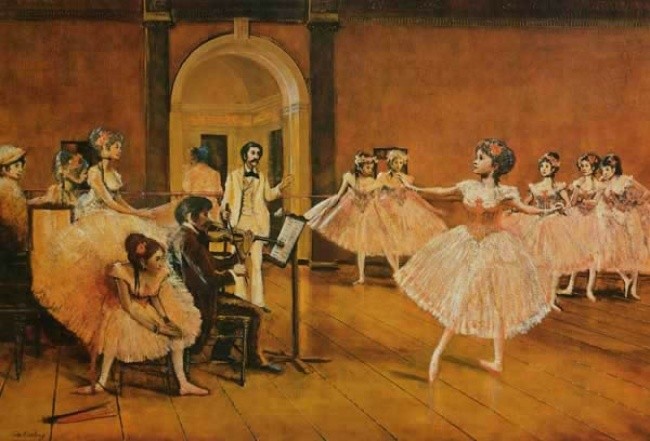
Briton Tom Keating, like many other artists who made fakes, did not intend to make a living in such an icky way. However, the artist named Keating did not want to buy. He drew the first forgery when he worked as a restorer – it was a work in the style of the British artist Frank Moss Bannet. Partner Keating brought the painting, without asking permission from the artist, to the neighboring gallery, where she accidentally discovered Keating on his way to work.
He himself considered himself a follower of Edgar Degas. He said that the famous artist was the teacher teacher of his early teacher. Then, it is true, Keating claimed that he was awakened by El Greco. In total for his life he painted about two thousand paintings, which are now sold at auctions under the name Keating. In the 1980s, when the artist’s deception was revealed, no one was interested in them, but ten years later Tom Keating’s paintings were sold for thousands of pounds and, according to experts, would only go up in the future.






